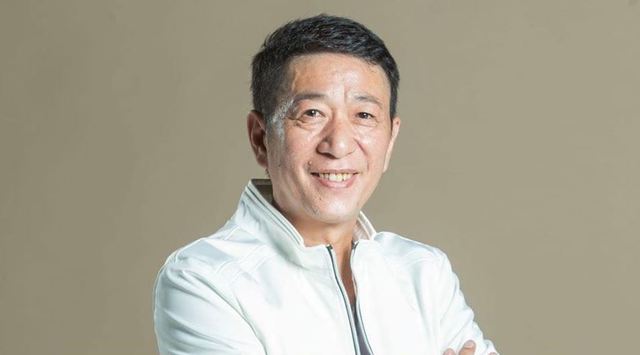Due to the absence of positive signs from Beijing on the horizon, closer U.S.-Taiwan cooperation is necessary to keep China in check and reassure Tokyo that the U.S. will uphold its East Asian commitments.
Cross-Strait relations took off in 2018 with a dispute over new commercial air routes launched by China. In a move that reneged on a March 2015 agreement between Taipei and Beijing, the Civil Aviation Administration of China (CAAC) opened M503 for northbound traffic along with three east-west corridors. Taiwan responded with concerns over air traffic safety addressed to the International Civil Aviation Organization (ICAO) and put a hold on approving requests for additional cross-Strait flights.
M503 is on China’s side of the median line and inside the Shanghai FIR (flight information region), which makes it within Beijing’s rights to make changes to the route. But it is also a good custom to consult other stakeholders. If Beijing was solely concerned about relieving traffic in other corridors, there was no easier way than to discuss the issue with Taiwan first. While the move per se does not pose a direct threat to Taiwan, the emerging tendency to casually violate previously agreed upon rules is of the highest concern. Next time it could be People’s Liberation Army Air Force (PLAAF) crossing the median line. Taiwan was not the only party to protest. Washington also expressed discontent over Beijing’s unilateral move.
The context
The dispute over M503 is not an isolated issue involving Taiwan, China, and the U.S., but instead is part of an evolving context. Last year was particularly busy for the U.S.-China-Taiwan triangle, what with U.S. President Donald Trump hinting at possible changes in the U.S. “one China” policy; the Chinese deputy ambassador to the U.S., Li Kexin, threatening war should U.S. Navy ships dock at Taiwan’s ports; U.S. Congress passing the Taiwan Travel Act, which encourages the president to authorize high-level official visits to and from Taiwan; and Taiwan earning unprecedented support in the new U.S. National Security Strategy.
Perhaps the most symbolic development, however, was the worrying number of PLAAF long-range bomber and spy plane patrols around Taiwan. The perception of an incoming crisis is apparently present and not unreasonable, albeit pundits and media tend to be overzealous in announcing a new era of instability in the Taiwan Strait.

“Perhaps the most symbolic development, however, was the worrying number of PLAAF long-range bomber and spy plane patrols around Taiwan.”
The “status quo” in the Taiwan Strait is changing. That much is clear. For decades, “status quo” was the catchphrase to describe the stalemate in the Taiwan Strait, a situation that was convenient for all involved in one way or the other. Nevertheless, the Taiwan Strait “status quo” has never been a static one. Though the government still pays lip service to the idea of the Republic of China and eventual unification (the current administration definitely much less than the previous one), survey after survey shows that the Taiwanese consider their identity to be separate from Chinese. Thus, support for continuing Taiwan’s current de facto independence is overwhelming, while support for unification is limited to a few Kuomintang (KMT) veterans and far-right self-identified Chinese zealots. The latter no longer talk about “retaking the mainland” but instead dream about “the mainland taking Taiwan.” In the parlance of color codes assigned to Taiwan’s political parties based on their support for independence or unification, the dark blue unificationists have become bright red.
Beijing’s perspective is fundamentally different, of course. Beijing has been adamant in claiming Taiwan before the world since the KMT fled to Taiwan in 1949 in the wake of its defeat by the Chinese Communist Party (CCP). Failure to achieve control over Taiwan (and its offshore islands) is a result of the activity of a few “splittists” and American meddling, while most Taiwanese compatriots cannot wait for “reunification.” Or so would Beijing like you to believe. The disconnect between the “Taiwan Question” as presented by official Chinese propaganda and reality is particularly worrying because, after decades of development, Beijing is coming close to achieving a state where it will be able to support its bellicose rhetoric by military means. A book published last year by PLA expert Ian Easton demonstrates clearly, and with the support of PLA internal documents, that Beijing has not yet met what is required for a full-out attack on Taiwan. However, it is getting close enough that it triggered rumors about a possible use of force even before 2020. President Xi Jinping has been particularly keen on linking “reunification” (read: annexation) of Taiwan with the cause of the “great rejuvenation of the Chinese nation.”
Uncle Sam’s role
The role of the U.S. is crucial, but not in the way Beijing presents it. China often argues that Washington is playing the Taiwan card to put pressure on Beijing. However, successive U.S. administrations were all too keen to put the “Taiwan Question” on the backburner, knowing that China’s position is at its core directly at odds with the U.S. position. At times, a risk-averse attitude on the part of the U.S. resulted in delaying arms sales, one of the most visible forms of U.S. support for Taiwan.
Observers would have a hard time finding a case in which the U.S. was “using” Taiwan to squeeze a concession from Beijing. The claim is deeply ironic because Beijing casually uses a hypothetical reining-in of North Korea as a bargaining chip in its dealings with Washington. Likewise, Taiwanese rejection of unification is not the result of Washington cultivating a small group of “separatists” who poisoned the minds of the younger generation. Support for continuing the “status quo,” eventually leading to de jure independence, is a Taiwan-wide grassroots phenomenon. Many pro-unification fathers have raised children who identify as Taiwanese and support independence. Taiwan’s democratic development, and not American involvement, is the real cause of Taiwan’s opposition to “one China.” The “China Dream” is not a dream that the Taiwanese people want to be part of.
However, for Washington the stakes are undeniably very high. Taiwan not only enjoys strong bipartisan support in the U.S. Congress (remarkable at a time when the legislature is deeply divided along partisan lines on most issues) but also in national security circles inside the Beltway. Its fall into Beijing’s hands would spell geopolitical disaster for U.S. allies in the region, Japan most notably. Thus, Washington sees the continued existence of Taiwan as de facto independent country as an integral part of its Indo-Pacific strategy despite some very prominent voices advocating “giving” Taiwan back to China as part of some “grand bargain.” Those elements of the 2017 National Security Strategy that concern China and Taiwan are also the result of a deep frustration within the U.S. national security community with what they see as the results of U.S. positive engagement with China since the 1980s. In their minds, the U.S. greatly assisted China’s economic development and all the U.S. received in return is Beijing’s active undermining of U.S. alliances and concerted efforts to evict the U.S. out of what China considers its backyard, such as Taiwan and the South China Sea.
Beijing shifts gear
This is where we are in 2018. That Beijing made little effort, if any, to try to continue cross-Strait negotiations after the electoral victories of the Democratic Progressive Party (DPP) and Tsai Ing-wen in 2016 cannot be explained away as the result of mere distaste for the DPP and its refusal to explicitly state that Taiwan is part of the People’s Republic of China. That certainly plays a role, but Beijing exercised a degree of flexibility on that issue before. China’s attitude would be different in form had the KMT won the 2016 elections, but even the last years of Ma Ying-jeou’s two-term presidency saw Beijing growing increasingly impatient with the “slow progress” on the unification front.
The more critical factor is that Beijing has finally realized it has lost the battle for Taiwanese hearts and minds. Beijing also understands that it cannot rely on the KMT, a party in obvious decline, to carry on the unification campaign. That only leaves fringe groups and groups already financed by Beijing as its interlocutors in Taiwan. If carrots did not work, the stick is all that is left. Beijing’s stubborn refusal to (officially) talk to the Tsai administration is a great shame because, for its part, Taiwan’s behavior post-2016 is an exercise in moderation in cross-Strait affairs, so much so that President Tsai and the DPP have displeased parts of their voter base. Nevertheless, President Xi’s China is more confident than ever, and with regards to Taiwan, this has thus far only translated into more belligerence.

Unable to win the hearts and minds of the Taiwanese, Beijing is now adopting a more bellicose approach to Taiwan.
There is a way forward for China, Taiwan, and the U.S., although not one that China would like. Due to the absence of positive signs from Beijing on the horizon, closer U.S.-Taiwan cooperation is necessary to keep Beijing in check and reassure Tokyo that the U.S. will uphold its East Asian commitments. The U.S. should also help foster closer, richer diplomatic and security ties between Taiwan and Japan, and between Taiwan and other actors on China’s border, especially India and Vietnam. Taiwan has already taken the initiative on many of those issues. Its relations with Japan are a shining example of good neighborly relations. However, U.S. support could help open doors that would otherwise remain closed help mitigate fears of Chinese retaliation.
For better or worse, a period of great power competition is probably inevitable, but the result can still be a new and stable “status quo.” And for everyone involved, that is always better than war.
This article is an expanded version of a piece originally published on BBC中文 as “學者點評:中共統一大業不能再依賴國民黨” on Jan. 22, 2018.
You might also like
More from China
A Few Thoughts on the Meng-Spavor-Kovrig Exchange
It is hard not to see this weekend’s developments as a victory for China and the creation of a world …
As Coronavirus Crisis Intensifies, Beijing Continues to Play Politics Over Taiwan
With a major epidemic on its hands, the Chinese government has not ceased its political warfare activities against Taiwan. It …
Candidate Claims ‘Nobody Loves Taiwan More Than Xi Jinping’
Family business connections in the Pingtan free-trade zone and a son’s involvement with the CPPCC are raising questions about possible …









